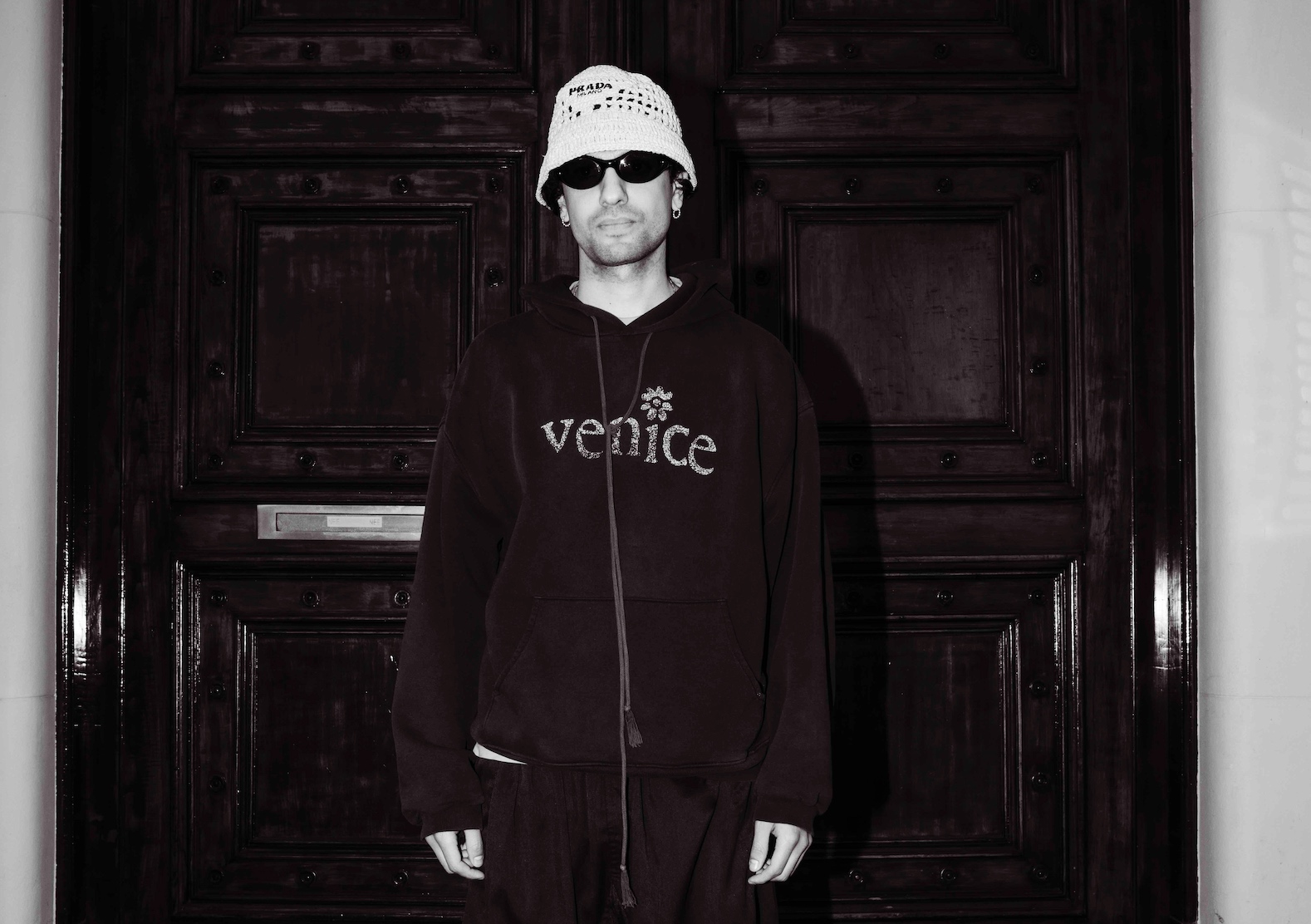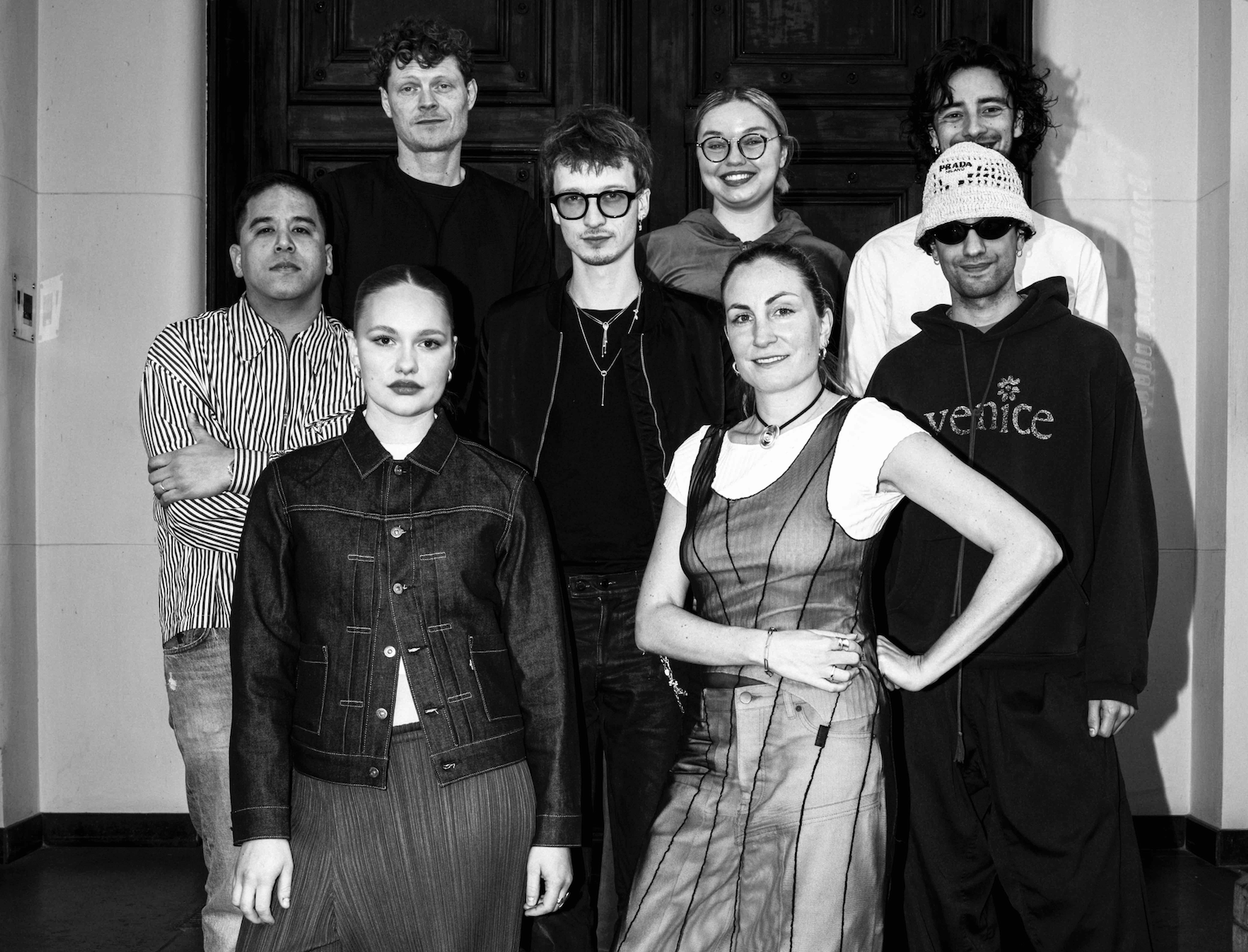This June, Amsterdam Fashion Week will make history with a runway on the A10 Ring — the first fashion show ever to take place on a Dutch highway. As part of this citywide celebration of Amsterdam’s 750th anniversary, three established designers have been invited to coach emerging talents toward a collective 60-look show. Among them: Borre Akkersdijk, founder of BYBORRE. Today we introduce his chosen talent whose work reflects two distinct but equally powerful forces shaping the future of Dutch fashion: Founder of Joone Joonam, Armia Yousefi
For his Op de Ring collection, Amsterdam-based designer Armia channels the spirit of the city that raised him in all its gritty, psychedelic, and unruly glory. His label Joone Joonam is known for challenging rigid categories and breathing new life into discarded materials through eclectic, emotionally driven design. For the Op de Ring runway, Armia was mentored by BYBORRE founder Borre Akkersdijk, whose own practice blends textile innovation with responsible systems thinking. “What I really appreciate about Armia’s work is that he doesn’t try to fit into a mould,” says Borre. “He designs from instinct and memory, and that gives his collection soul.”
Can you tell me something about your career as a designer and how you eventually founded Joone Joonam?
I studied for a long time. Four years in a tailoring programme, followed by KABK and then another four years at HKU. I freelanced for a while, and worked for a designer from The Netherlands, which led me to a job in Italy. Through freelancing I realised how much I wanted to work for myself. The designer I worked for really encouraged me to explore that. I figured, if I just made one collection, at least I would have tried. So I scraped together 4000 euros, made my own collection, and took it to Paris. That’s how I got in touch with a really cool store in Japan. When I saw how well it landed, I knew I had to keep going. I’m now working on my fifth season, and each collection feels like it’s getting more refined. This project for me is a mix of my own collection, together with Levi’s® elements and Amsterdam’s 750th anniversary. It’s also my reintroduction to AFW. I first took part in 2019 through Lichting, and when Borre approached me for this, it felt like a full-circle moment.
Your label pushes back against binary thinking and celebrates the idea that beauty doesn’t restrict the body, but frees it. How do you translate that philosophy into your work?
For me, it’s something that happens very naturally. I’m a very free designer and I don’t pin myself down to one design identity but follow whatever I’m interested in at the moment. I’m a huge history nerd, so I often draw inspiration from historical garments. Nature is another big influence. These references always find their way back into my collections, and they’re a key part of how I work.

Borre Akkersdijk is your coach for this project. How has his expertise helped you?
Borre has a really international way of thinking, which is something I’m aiming for too. I don’t need coaching on how to make a collection as I know how to run production, but he really helps me with the challenges I run into, like finding models. He’s also told me how much he values helping shape the next generation of talent, and that means a lot to me. He shows me the possibilities and opportunities that can come from partnerships. I’m someone who normally works in isolation, with a small team. I often say no to collaborations because I want to build everything from the ground up myself and stay independent, I’m really protective of my work. Borre helps me see that collaborations don’t have to threaten that, but can actually strengthen your path forward.
Your collection draws inspiration from Amsterdam, with themes like freedom, decay, and psychedelia. How does the energy of the city shape the way you approach fashion — and what are you trying to express?
I’ve woven elements of Amsterdam into the collection that reflect how I experience the city. To me, Amsterdam really represents freedom and that mirrors how I approach my design process. I work very organically, and I often change things last minute if the idea isn’t fully landing. Psychedelia reflects that freedom and is a big part of the city’s identity. It also has a strong visual language, which I’ve incorporated into the collection. I’ve for example kept the original values of a Levi’s denim jacket intact, but manipulated the shape in trippy ways.
Decay is my way of offering critique. I always try to make collections that say something. They’re like time stamps of the moment they were made in. There have been political decisions that have made Amsterdam less accessible to people who grew up here. Amsterdammers are being forced to move out, and it’s getting harder to survive or grow within the city. So while I see this collection as a celebration of Amsterdam, I also think it’s important to name those issues.
In that sense, it’s a big statement to be seen as “the future of Amsterdam.” What I do appreciate here is the strong sense of community, but I don’t attach myself too quickly to one set group of people, I don’t want to be pinned down by that either. Through my designs, I want to attract and connect with people who feel inspired by what I do. I’ve been lucky to find that, especially in places like Japan and Korea.
How did working with Levi’s® repurposed denim inventory influence your design process?
I usually don’t work with just one dominant material, so it was definitely a challenge to use that much denim in one collection. Still, I ended up translating it in all kinds of ways; from expedition-style techwear to romantic, fur-like pieces, and funky, tribal elements. I have a lot of respect for the archetypes Levi’s® is built on. We were given things like 501s and classic denim jackets, so I really looked at those pieces and thought about how Joone Joonam could approach them. There are distortions, sure, but it’s still a denim jacket. I just wanted to create beautiful, balanced garments that hold on to the value those pieces already had.
How do you balance commercial viability with creative freedom, and does that tension ever get in the way?
That actually comes pretty naturally to me. I have a good feel for making balanced collections. I can go all in on experimental pieces but also make a really clean, well-fitted pair of trousers that’s easy to wear. Wearability and creative freedom don’t have clash. I never write down in advance what my visual language is going to be or what the collection will look like. I think “couture” for instance, is a heavy term and I don’t want to be bound by that. We do a bit of everything. That’s how it’s always been. There can be a tracksuit next to a couture gown in the same collection. That all-over-the-place energy is part of who I am, and that shows in my design identity, which, luckily, a lot of people respect. That goes for this collection too.
Can you already reveil something about the upcoming show in June?
Until now I always worked with look books and did showrooms in places like Paris. This is my first real runway show under Joone Joonam, so I want the whole experience to feel true to me. I want everything, the visuals, the styling, the setting, to feel like an extension of the brand.
Show Op de Ring
In just a few weeks, Armia’s collection will take to the A10 in what’s set to be a landmark moment for Dutch fashion. For Borre, the opportunity to guide a young designer through such a bold debut is both urgent and personal. “I’m proud of what we’ve built with BYBORRE. With this project however, I saw a chance to offer something I never had: a springboard into the industry, a network you can build on,” he says. “That’s something Amsterdam can and should offer the next generation. It’s a city built on contradiction, innovation, and creativity. I see this moment as a way to pass that energy on.”
Above all, Borre hopes the show gives young talent the freedom to lead on their own terms. “Fashion is at a turning point. We don’t need to replicate systems that are already crumbling. Armia is someone who’s not waiting for permission, he’s building his own rhythm, and that’s what makes his work resonate. This show proves there’s space for difference.”
